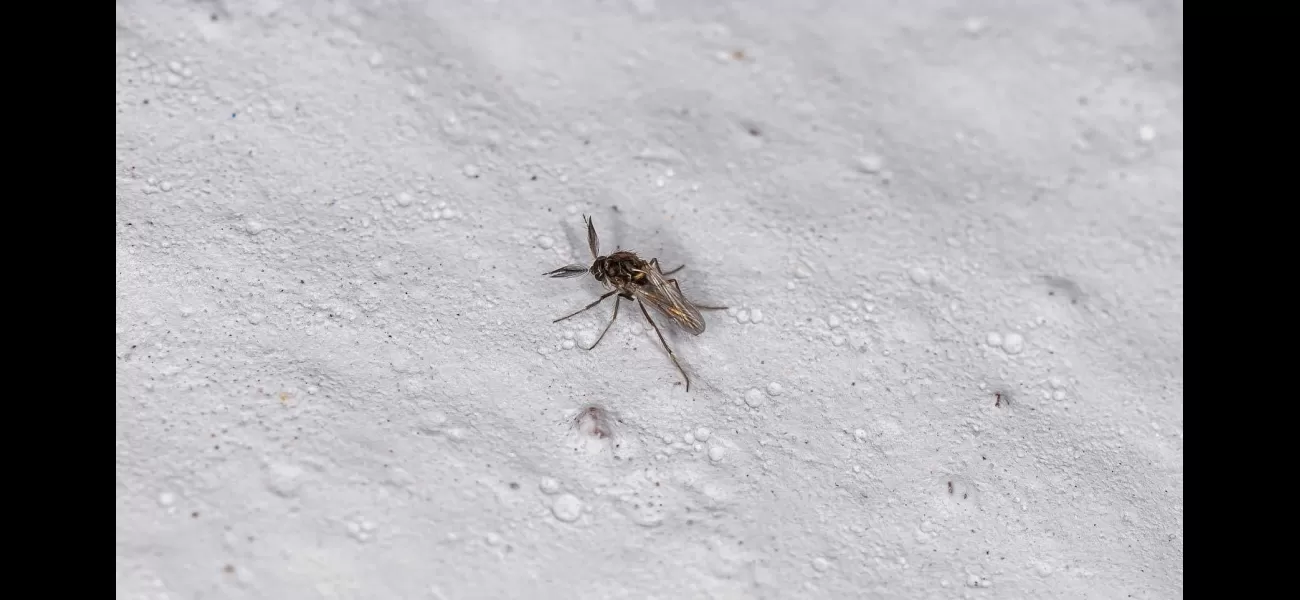Oropouche virus is a newly recognized danger that has been identified by health authorities.
Deadly disease transmitted by insects is causing concern among health officials.
August 27th 2024.

A little-known disease, transmitted through insect bites, has recently become a growing concern as it has turned deadly. Health officials are now raising the alarm as the number of cases of Oropouche virus continues to rise. As of August 1st, there have been over 8,000 reported cases, mostly in South America, but also in countries where it was previously unheard of. Even in the United States and Europe, there have been dozens of cases reported in travelers who have visited affected regions.
The Pan American Health Organization, a regional branch of the World Health Organization, has issued an epidemiological alert for Oropouche virus and has classified the public health risk level as "high" for the Americas region. This is due to the fact that while the disease was previously considered mild, there has been an increase in more severe cases and the spread of the virus to new areas. The agency stresses the need for increased surveillance and understanding of the potential severe manifestations of the disease.
In response to the growing threat, the US Centers for Disease Control and Prevention has also issued a health advisory to healthcare providers and public health authorities, urging them to be vigilant for new cases and advising pregnant women to avoid travel to affected regions. It has been reported that at least 21 travelers returning from Cuba have tested positive for Oropouche virus.
So, what exactly is Oropouche virus? It was first discovered in 1955 in a village in Trinidad and Tobago, where it gets its name. Since then, there have been approximately 500,000 cases recorded, but knowledge about the disease is limited. In fact, The Lancet medical journal has even referred to it as a "mysterious threat" in a recent editorial. Symptoms of the virus can be similar to those of dengue or Zika, including fever, chills, headache, muscle pain, joint stiffness, and eye pain. In rare cases, it can also infect the nervous system and cause meningitis and encephalitis.
The virus is spread through insect bites, primarily from biting midges and certain types of mosquitoes. It is endemic to the Amazon basin region of South America, where it is maintained in a cycle between insects and other hosts such as rodents, sloths, and birds. This highlights the importance of avoiding mosquito bites in these areas, as people who visit can carry the disease back to more urban areas. Climate change and deforestation also play a role in creating more opportunities for human-insect interaction and increasing the risk of spread.
The current outbreak is spreading rapidly in countries where the virus is known to circulate, as well as in new areas. Locally acquired cases have been reported in Bolivia, Brazil, Colombia, Cuba, and Peru. While there is no evidence of local transmission in the United States, several cases have been reported in individuals who have traveled to affected regions. The risk of sustained local transmission in the continental United States is believed to be low, but the risk level is less certain in places like Puerto Rico and the US Virgin Islands, which have similar ecologies to Cuba.
Recent shifts in the geography of the virus's spread suggest that there may be new vectors involved in the transmission cycle. The CDC is working to gain more information about the virus and provide updates as they become available. This year also marks the first time that deaths have been reported from Oropouche virus, as well as evidence of transmission from pregnant women to their fetuses, resulting in adverse birth outcomes. The severity of these cases may be due to an increase in the overall number of infections.
Unfortunately, there is currently no vaccine or specific antiviral treatment for Oropouche virus. Diagnosis can be confirmed through laboratory testing, but it is not widely available. The best way to protect against the virus is to prevent mosquito bites by avoiding outdoor activities during peak biting hours, wearing protective clothing, and using effective mosquito repellent. The CDC has issued travel advisories for South America and Cuba and advises pregnant women to reconsider nonessential travel to Cuba. It is important to stay informed and take necessary precautions to avoid being bitten by infected insects.
The Pan American Health Organization, a regional branch of the World Health Organization, has issued an epidemiological alert for Oropouche virus and has classified the public health risk level as "high" for the Americas region. This is due to the fact that while the disease was previously considered mild, there has been an increase in more severe cases and the spread of the virus to new areas. The agency stresses the need for increased surveillance and understanding of the potential severe manifestations of the disease.
In response to the growing threat, the US Centers for Disease Control and Prevention has also issued a health advisory to healthcare providers and public health authorities, urging them to be vigilant for new cases and advising pregnant women to avoid travel to affected regions. It has been reported that at least 21 travelers returning from Cuba have tested positive for Oropouche virus.
So, what exactly is Oropouche virus? It was first discovered in 1955 in a village in Trinidad and Tobago, where it gets its name. Since then, there have been approximately 500,000 cases recorded, but knowledge about the disease is limited. In fact, The Lancet medical journal has even referred to it as a "mysterious threat" in a recent editorial. Symptoms of the virus can be similar to those of dengue or Zika, including fever, chills, headache, muscle pain, joint stiffness, and eye pain. In rare cases, it can also infect the nervous system and cause meningitis and encephalitis.
The virus is spread through insect bites, primarily from biting midges and certain types of mosquitoes. It is endemic to the Amazon basin region of South America, where it is maintained in a cycle between insects and other hosts such as rodents, sloths, and birds. This highlights the importance of avoiding mosquito bites in these areas, as people who visit can carry the disease back to more urban areas. Climate change and deforestation also play a role in creating more opportunities for human-insect interaction and increasing the risk of spread.
The current outbreak is spreading rapidly in countries where the virus is known to circulate, as well as in new areas. Locally acquired cases have been reported in Bolivia, Brazil, Colombia, Cuba, and Peru. While there is no evidence of local transmission in the United States, several cases have been reported in individuals who have traveled to affected regions. The risk of sustained local transmission in the continental United States is believed to be low, but the risk level is less certain in places like Puerto Rico and the US Virgin Islands, which have similar ecologies to Cuba.
Recent shifts in the geography of the virus's spread suggest that there may be new vectors involved in the transmission cycle. The CDC is working to gain more information about the virus and provide updates as they become available. This year also marks the first time that deaths have been reported from Oropouche virus, as well as evidence of transmission from pregnant women to their fetuses, resulting in adverse birth outcomes. The severity of these cases may be due to an increase in the overall number of infections.
Unfortunately, there is currently no vaccine or specific antiviral treatment for Oropouche virus. Diagnosis can be confirmed through laboratory testing, but it is not widely available. The best way to protect against the virus is to prevent mosquito bites by avoiding outdoor activities during peak biting hours, wearing protective clothing, and using effective mosquito repellent. The CDC has issued travel advisories for South America and Cuba and advises pregnant women to reconsider nonessential travel to Cuba. It is important to stay informed and take necessary precautions to avoid being bitten by infected insects.
[This article has been trending online recently and has been generated with AI. Your feed is customized.]
[Generative AI is experimental.]
0
0
Submit Comment




